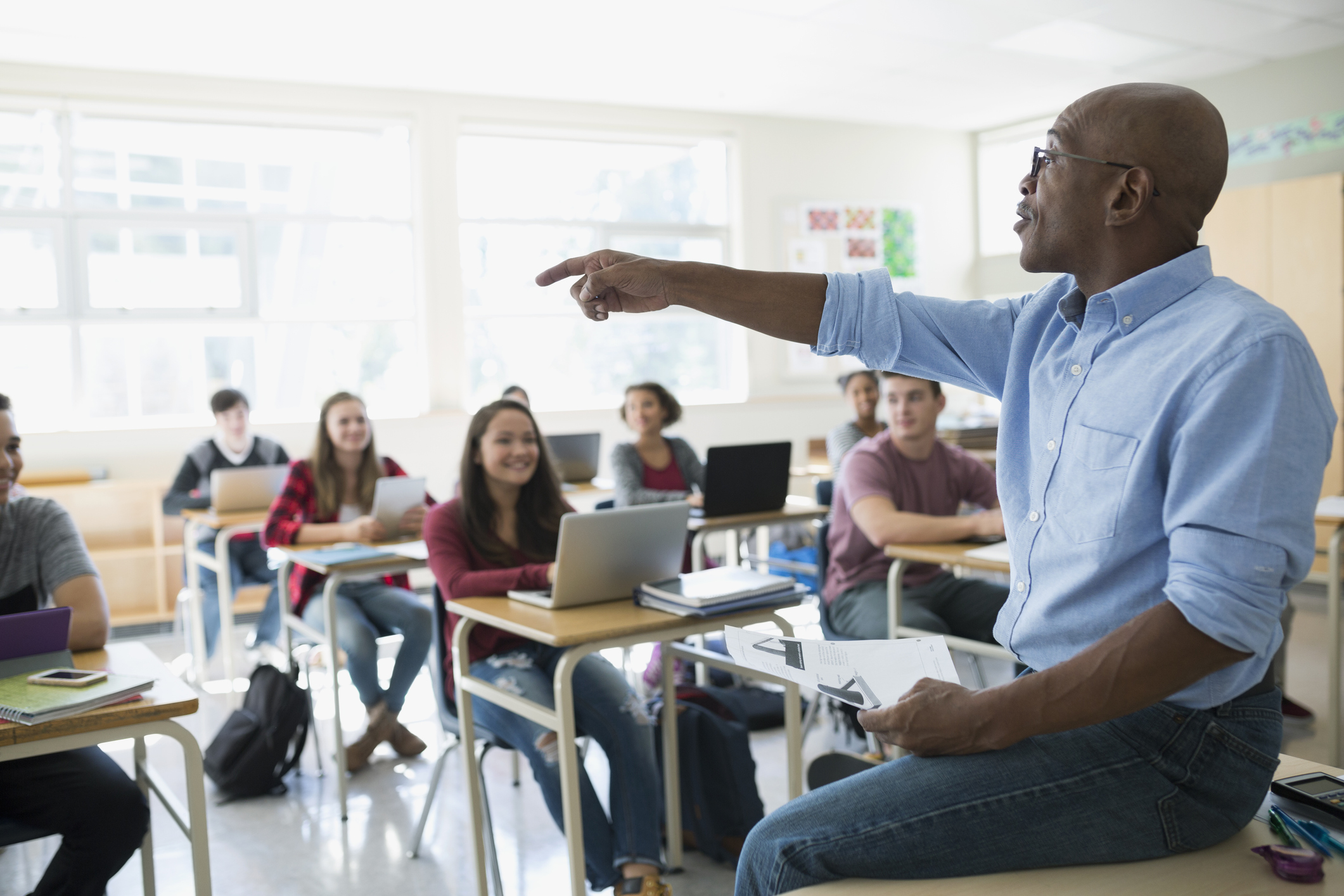Top Primary Science Tuition Singapore to Help Your Child Excel
Top Primary Science Tuition Singapore to Help Your Child Excel
Blog Article
A Comprehensive Overview to the Different Discovering Approaches in Main Scientific Research Direction
The expedition of diverse knowing methods in key scientific research direction provides an opportunity for educators to improve trainee interaction and comprehension considerably. By taking a look at hands-on discovering techniques, inquiry-based approaches, and joint strategies, we can determine efficient practices that accommodate different finding out designs. Additionally, the integration of modern technology and distinguished instruction plays a critical function in fostering a comprehensive atmosphere. However, the concern remains: exactly how can these approaches be successfully implemented in the classroom to optimize their effect? The solution hinges on a better analysis of each method and its effects for teaching science.

Hands-On Knowing Strategies
Hands-on learning techniques play a critical duty in key science direction, engaging trainees in active exploration and testing. These approaches permit students to connect directly with sensations and products, promoting a much deeper understanding of clinical ideas. By utilizing manipulatives, models, and real-life experiments, educators develop a setting where trainees can observe, assume, and check their concepts.
Such strategies not just boost understanding however also cultivate essential reasoning and analytic abilities. When trainees get involved in tasks like constructing easy devices, planting seeds, or carrying out chemical reactions, they are urged to ask questions and seek answers via their very own observations. This experiential approach aids to debunk complicated scientific concepts, making them a lot more relatable and easily accessible.
Furthermore, hands-on discovering promotes cooperation amongst peers, as students often work in teams to carry out experiments or share findings. This synergy not only improves their discovering experience but additionally develops crucial social abilities. Ultimately, incorporating hands-on techniques in main science guideline fosters a long-lasting love of discovering and inquisitiveness concerning the natural globe, laying a strong foundation for future academic quests in scientific research and past.
Inquiry-Based Discovering
Inquiry-based learning is a training strategy that motivates pupils to ask questions, check out phenomena, and build their very own understanding of scientific ideas. This approach shifts the emphasis from traditional teacher-led direction to an extra student-centered experience, where students take the initiative in their academic trip. By cultivating curiosity, inquiry-based discovering advertises much deeper engagement with the material, allowing trainees to discover topics in a significant context.
In technique, this method usually involves hands-on experiments, observations, and essential reasoning tasks that straighten closely with the scientific technique. Pupils are urged to formulate hypotheses, style investigations, and evaluate information, which grows crucial abilities such as problem-solving and analytical reasoning. The duty of the educator in this framework is to assist in expedition, assisting trainees with the query process while urging independent idea and partnership.
Additionally, inquiry-based discovering nurtures a sense of ownership over the understanding procedure, inspiring trainees to seek expertise actively. This method not just boosts understanding of clinical ideas but also cultivates a lifelong love for learning, equipping pupils with the abilities required to navigate a progressively complex globe.
Collaborative Discovering Approaches
Collaborative discovering approaches equip pupils to participate in significant communications with peers, fostering a common obligation for their instructional end results. In primary science guideline, these strategies encourage learners to interact to explore clinical ideas, address troubles, and conduct experiments (primary science tuition Singapore). By participating in team activities, trainees can leverage varied perspectives, allowing for richer understanding and retention of scientific understanding
One trick element of collaborative learning is the focus on communication skills. Pupils must express their ideas, listen actively to others, and negotiate ideas, every one of which are essential expertises in both scholastic and real-world contexts. This social interaction not just enhances their understanding of scientific concepts but likewise promotes teamwork and conflict resolution abilities.
Moreover, collective discovering my review here commonly brings about boosted motivation and engagement. When pupils see the worth of their contributions within a team, they are most likely to take possession of their learning trip. Teachers can promote this procedure deliberately organized group jobs that align with curriculum goals while providing assistance on effective collaboration strategies. Overall, incorporating collaborative knowing strategies in primary science guideline cultivates a vibrant discovering environment that prepares pupils for future scholastic and social challenges.
Technology Integration in Scientific Research
The integration of modern technology in key science instruction improves learning experiences by providing innovative tools and resources that sustain various training methodologies, consisting of joint knowing - primary science tuition Singapore. Making use of electronic systems, simulations, and interactive applications allows pupils to involve deeply with clinical ideas, helping with a more hands-on strategy to discovering
Online laboratories, as an example, allow learners to carry out experiments safely and successfully, promoting inquiry-based discovering. These tools can imitate real-world clinical scenarios, enabling students to picture intricate processes that would be tough to reproduce in a standard class setting. Modern technology fosters interaction and cooperation among students, as they can share findings and function with each other on projects through on the internet systems.
Furthermore, multimedia presentations and instructional video clips can enrich lessons by providing to varied knowing designs, making abstract principles a lot more accessible. Data evaluation devices additionally empower students to gather and interpret clinical information, reinforcing important assuming skills. On the whole, the tactical consolidation of technology in main science instruction not only enhances involvement yet additionally prepares trainees for a highly advanced society, equipping them with necessary abilities for future clinical ventures.
Separated Direction Methods
Distinguished instruction techniques are essential for attending to the varied demands of students in primary scientific research education and learning. These strategies allow instructors to tailor their mentor methods to fit differing capabilities, passions, and learning styles within the classroom. By using distinguished instruction, teachers can produce an inclusive setting that promotes interaction and enhances understanding of scientific ideas.
One efficient strategy is to make use of versatile grouping, which allows trainees to collaborate with peers at similar skill degrees read the full info here or with varying perspectives. This method motivates peer knowing and promotes crucial reasoning. Furthermore, providing selections in projects can empower pupils, enabling them to pick tasks that reverberate with their interests while still satisfying curricular objectives.
Moreover, incorporating tiered jobs is one more important strategy. By making jobs with varying levels of intricacy, teachers can guarantee that all students are suitably challenged, no matter their effectiveness. Using formative assessments to determine comprehending further makes it possible for instructors to adjust their educational methods dynamically, ensuring that each student gets the support they require.
Eventually, implementing separated instruction approaches in main scientific research education not just improves pupil knowing end results however additionally cultivates an interest for science, preparing pupils for future scholastic pursuits.

Verdict
In summary, efficient primary science guideline requires a multifaceted method that encompasses hands-on understanding, inquiry-based techniques, and collaborative methods. The integration of modern technology and separated guideline even more caters to diverse understanding styles, fostering an environment for expedition and vital reasoning. By executing these methods, educators can improve trainee involvement and comprehension, ultimately supporting a long-lasting passion for science and query. Such thorough approaches are necessary for creating informed and curious future researchers.
The exploration of diverse learning methods in key scientific research guideline presents a possibility for instructors to improve student interaction and comprehension dramatically.Hands-on learning techniques play an essential function in main science guideline, involving trainees in active expedition and trial and error.Inquiry-based discovering is a training approach that urges pupils to ask inquiries, explore phenomena, and construct their very own understanding of scientific concepts.Joint knowing approaches encourage trainees to engage in purposeful interactions with peers, cultivating a common read what he said obligation for their educational end results. In general, incorporating collective learning strategies in main scientific research direction grows a dynamic understanding atmosphere that prepares trainees for future scholastic and social difficulties.
Report this page